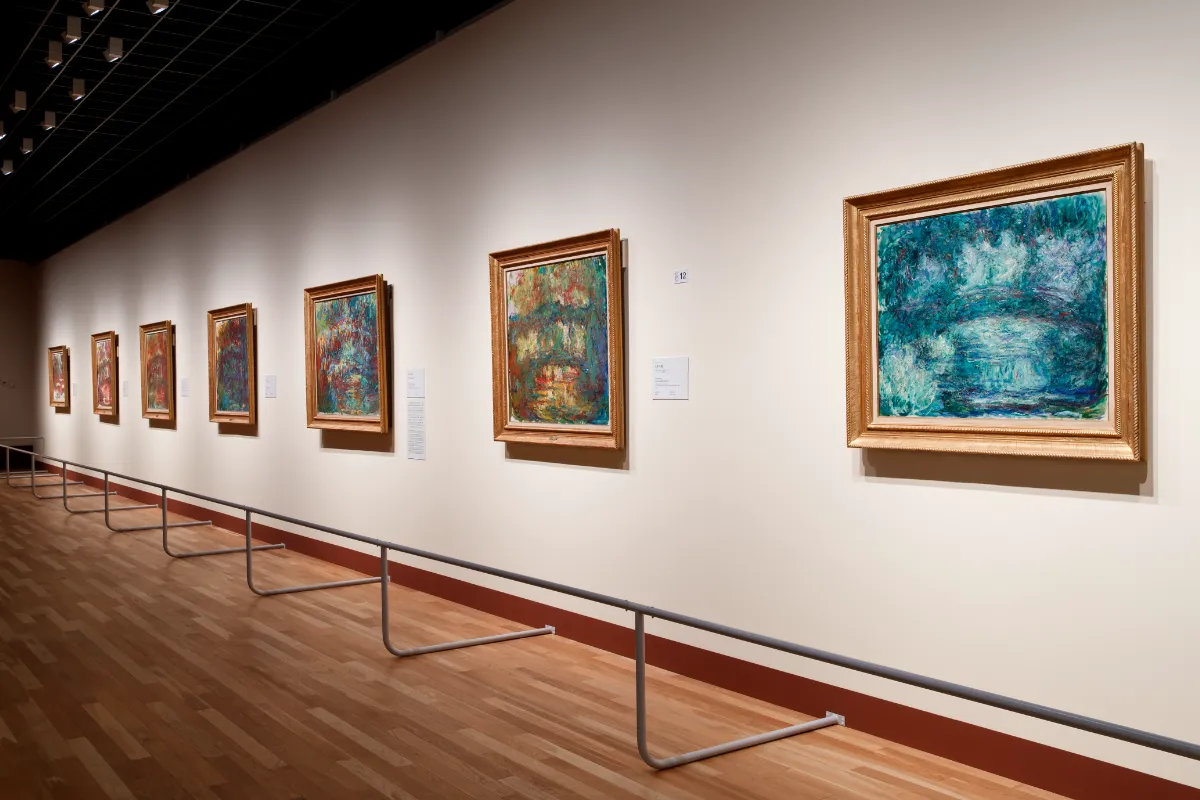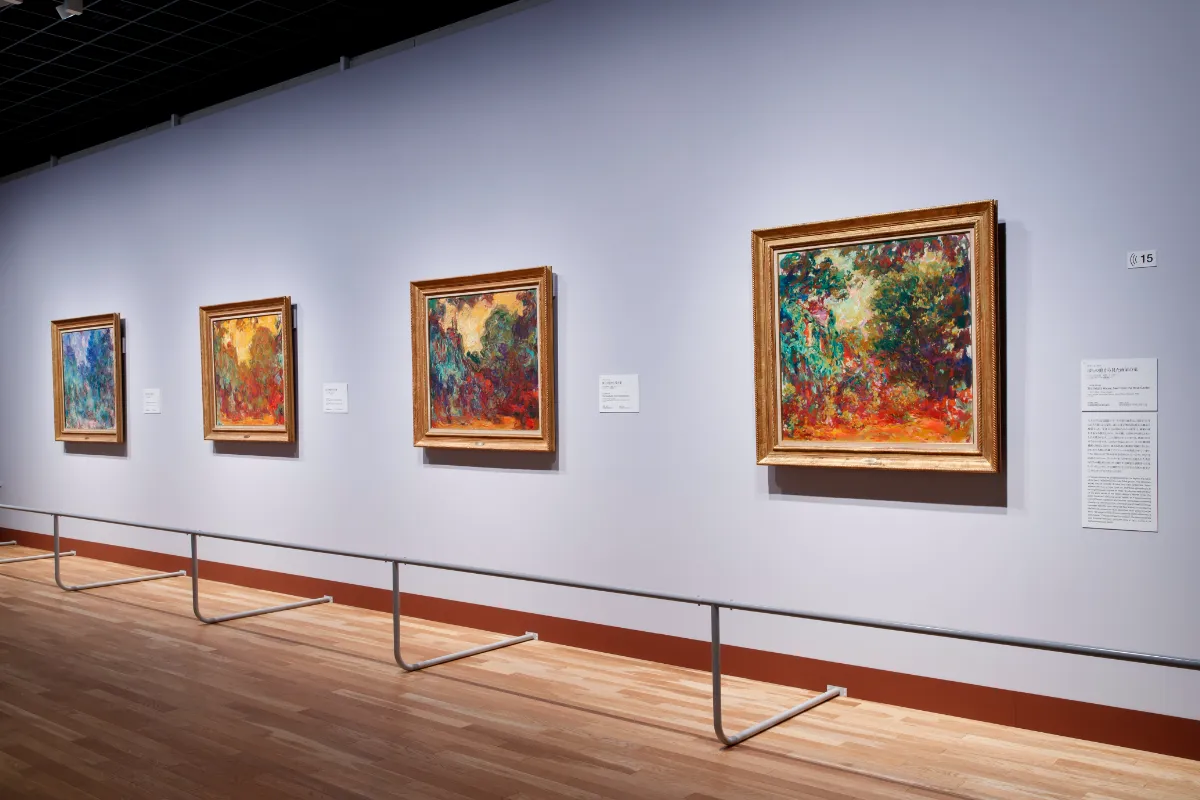INDEX
Monet’s Last Years: A Symphony of Colors

The exhibition culminates in its highlight. In Chapter 4, “Symphonic Colors,” visitors are introduced to Monet’s later works from after 1918. While the over 20 “Water Lilies” paintings are remarkable, the intensity of this section is equally compelling. The works are all small series, with the ones shown in the image above featuring the same composition of the garden’s arched bridge. Compared to Monet’s earlier series, like the haystacks, the colors and brushstrokes here are strikingly bold.

In the depiction of the drum bridge, it may be difficult to discern what’s being portrayed unless one consciously reminds themselves of its subject. Monet, despite battling color vision issues and declining eyesight due to cataracts, never lost his creative drive as he approached 80. The sweeping brushstrokes seem to reflect the very movement of Monet’s own body as he painted. Rather than simply viewing a painting of the drum bridge, one might feel as if they’re witnessing the act of painting itself—Monet’s determination and passion laid out before them. This is one reason why his late works have been reinterpreted as early examples of abstract expressionism, akin to the work of Jackson Pollock.

Monet’s final series, The House Seen From The Rose, is also on display, with four out of the eight paintings from the same composition gathered together. The second piece from the right, with its beautiful scene where the orange glow of the sunset seems to cover everything, stands out.






















